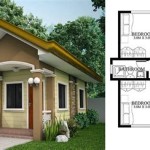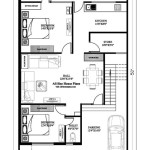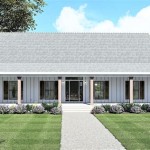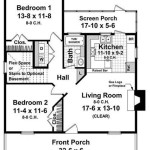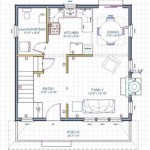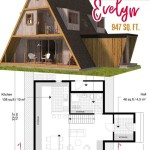```html
Small House Design Plans: 2 Bedroom
Designing a small house with two bedrooms requires careful planning and prioritization to maximize space and functionality. These plans are often sought after by first-time homebuyers, small families, or individuals looking to downsize. The focus is on creating a comfortable and efficient living environment within a smaller footprint. Several key factors influence the design process, including budget constraints, lot size limitations, and lifestyle preferences.
The beauty of small house designs lies in their simplicity. They encourage decluttering, promote a minimalist lifestyle, and often lead to lower utility bills and maintenance costs. However, achieving a desirable living space in a compact area demands ingenuity and a thorough understanding of spatial planning principles.
Optimizing Layout and Space Utilization
The layout is paramount in a small two-bedroom house. Open-concept living areas are frequently employed to create a sense of spaciousness. Combining the living room, dining area, and kitchen into a single, flowing space eliminates unnecessary walls and allows natural light to penetrate deeper into the home. Strategic furniture placement is crucial in defining zones within the open layout. Area rugs, varying floor levels (though less common in small spaces), and carefully chosen lighting can help delineate distinct areas for relaxation, dining, and cooking.
Vertical space should also be considered. Tall ceilings can add to the feeling of openness, and storage solutions that extend upwards, such as shelving units and cabinets, can maximize storage capacity without taking up valuable floor space. Lofted areas, if feasible, can provide additional space for storage, a home office, or even a guest sleeping area. However, careful consideration must be given to building codes and accessibility requirements when planning lofted spaces.
The shape of the house also influences the layout. Rectangular plans are generally easier and more cost-effective to build and furnish. However, L-shaped or U-shaped designs can create more private outdoor spaces and allow for better natural light penetration. Ultimately, the optimal shape depends on the specific site conditions and the homeowner's preferences.
Hallways should be minimized to avoid wasting space. Direct access from one room to another, where practical, can eliminate the need for long corridors. Pocket doors or sliding doors can save space compared to traditional swing doors, especially in tight areas like bathrooms and bedrooms.
Bedroom Design Considerations
In a two-bedroom small house design, one bedroom is typically designated as the master bedroom, while the other serves as a guest room, child's room, or home office. The master bedroom should ideally be slightly larger and may include an ensuite bathroom or a walk-in closet, if space allows. Prioritizing natural light and ventilation in both bedrooms is essential for creating a comfortable and healthy sleeping environment.
Built-in storage solutions, such as wardrobes and shelving, can help maximize space in both bedrooms. Multi-functional furniture, such as beds with built-in drawers or desks that can be folded away, can also be useful in smaller bedrooms. The choice of furniture should reflect the overall aesthetic of the house and be scaled appropriately for the size of the room. Overly large furniture can make a small room feel even smaller.
Color schemes can also impact the perceived size of a bedroom. Lighter colors tend to make rooms feel larger and brighter, while darker colors can make them feel smaller and cozier. A strategic use of mirrors can also create the illusion of more space.
Attention to detail is crucial in bedroom design. Proper lighting, comfortable bedding, and personal touches can transform a small bedroom into a welcoming and relaxing sanctuary.
Integrating Functional Kitchen and Bathrooms
The kitchen and bathrooms are crucial areas in any house, and in a small house design, their functionality is paramount. In the kitchen, efficient layout planning is essential to maximize counter space and storage. A galley kitchen or a U-shaped kitchen are often good choices for small spaces, as they provide ample work surfaces within a compact area. Consider incorporating vertical storage solutions, such as pull-out pantries and overhead cabinets, to maximize storage capacity.
Appliances should be appropriately sized for the needs of the household. Smaller appliances, such as a compact refrigerator or a convection microwave oven, can save space. Consider installing a combination washer and dryer unit to save space in the laundry area, or incorporating the laundry into a bathroom or kitchen space.
In the bathrooms, space-saving fixtures are essential. A wall-mounted toilet and a pedestal sink can free up floor space. A shower-tub combination is often a practical choice for small bathrooms, as it provides both showering and bathing options. Again, strategic use of mirrors can make the bathroom feel larger. Proper ventilation is crucial to prevent moisture buildup and mold growth.
Natural light is just as important in these functional spaces as in the living areas. Maximizing natural light through windows or skylights can make the kitchen and bathrooms feel more inviting and less cramped.
Durable and easy-to-clean materials are essential for both the kitchen and bathrooms. Consider using materials that are resistant to moisture, stains, and scratches. Proper planning and attention to detail can transform these functional areas into efficient and stylish spaces.
Additional considerations for small house design plans include soundproofing between rooms, particularly between bedrooms and living areas. This can be achieved through the use of insulation, solid-core doors, and careful placement of furniture. Energy efficiency is also a key factor. Utilizing energy-efficient windows, insulation, and appliances can significantly reduce utility bills and contribute to a more sustainable lifestyle.
Finally, it is important to consult with a qualified architect or designer to ensure that the small house design meets all applicable building codes and regulations. A professional can also provide valuable insights and suggestions to optimize the design and create a comfortable and functional living space.
```
Two Bedroom Small House Design Shd 2024030 Pinoy Eplans Plans Floor

Unique 2 Bedrooms House Plans With Photos New Home Design De4 Small Floor Tiny Two Bedroom Plan

2 Bedroom House Plan Examples

Plan Details Floor Code Shd 2024016 Small House Designs Beds 2 Baths 1 Are Plans With S Design
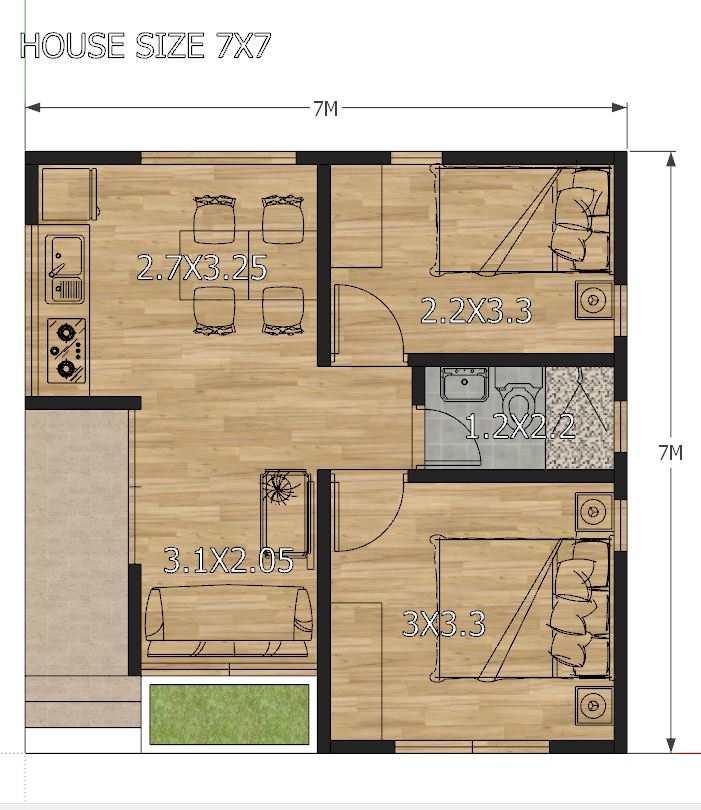
Small House Design 7x7 With 2 Bedrooms Plans 3d

2 Bedroom Apartment House Plans

2 Bedroom Tiny House Plans Blog Eplans Com

5 Small And Simple 2 Bedroom House Designs With Floor Plans Design Es Two

2 Bedroom House Plan Examples

Small House Plan 9 X 10m 2 Bedroom With American Kitchen 2024

